 We’re just coming into the peak golf club purchasing period in the northern half of the United States. A lot you may be trolling the aisles of new clubs in the next few months looking for a few extra yards or a few less strokes per round.
We’re just coming into the peak golf club purchasing period in the northern half of the United States. A lot you may be trolling the aisles of new clubs in the next few months looking for a few extra yards or a few less strokes per round.
I know… the economy sucks. The TV keeps reminding me every evening. But I also know that I’ll probably still be trying out some new gear this summer. After all, someone has to kick start the economy (maybe a new driver purchase will get the Dow above 8K again). As long as I’m working, I’ll likely be playing golf. And if I’m playing golf, then all those new toys in the golf shop will be kind of tempting. And I bet I’m not alone.
Now I’ve purchased quite a few new clubs in recent years looking for a few more yards or a tighter shot dispersion (I know, I know… it’s not the arrow). Sometimes I’ve found a little more game. Sometimes I haven’t. Here are a few questions that might help you find the right equipment for you, and maybe save a little money along the way, too.
Hole Number Five: Forgiveness or Workability?
Primarily, clubs fall somewhere along a range from ultra-forgiving game improvement clubs to workable “players” clubs. Some golfers are very concerned as to whether they are good enough to play a certain kind of club. My advice is try them all and see what you like. I’ve known double-digit handicappers who play true musclebacks (about as unforgiving as they come) and near-scratch players who like what others might call “shovels.”
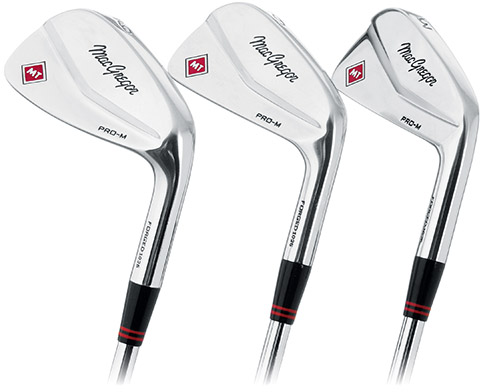 Some folks argue that playing less forgiving clubs is good for your game because they provide truer feedback and “encourage” you to make more solid contact. Others prefer to get a little more help from their clubs.
Some folks argue that playing less forgiving clubs is good for your game because they provide truer feedback and “encourage” you to make more solid contact. Others prefer to get a little more help from their clubs.
If you work on your game a fair amount, maybe visiting a range once a week or so and playing a fair bit, you may well want to get clubs that give you more feedback. If you only get out to play every few weeks and you don’t have time to practice, you may want to go with something that helps you hit straighter shots.
In the end, though, life is too short. Play what makes you feel better about you and your game. If that’s playing the same gear that a tour player uses, that’s fine. If you just want to enjoy yourself on the course and not have to worry about shaping shots, get some easy-to-hit shovels. If it’s important to you to have a matching bag and headcovers, that’s OK, too. Heck, if putting one of those Butthead covers on your driver makes the game a little more fun for you, more power to you.
Hole Number Four: Graphite or Steel?
This used to be an easy answer: steel in irons, graphite in woods (actually, about 25 years ago it was even easier: steel in both). As late as the early 2000s, Tiger was still using steel in all of his clubs, though he now has graphite in his woods.
Steel was truly one of the first revolutionary materials in golf. It completely changed the game over just a few years and has now been around fairly unchanged for nearly 100 years.
Graphite shafts, which are basically made by rolling sheets of graphite fibers together, really began to take market share during the 90s. The early models were too whippy and had torque and accuracy issues. They were lightweight and could result in longer shots from woods, but they could also send shots off line very easily. For much of the 90s, the conventional wisdom held that irons were much better suited to steel shafts, while in woods the occasional erratic shot could be tolerated in exchange for the increased yardage. Only slower swing-speed players were encouraged to use graphite in their irons for the extra distance and forgiveness. Thus, graphite shafts in irons became known as a setup for older players.
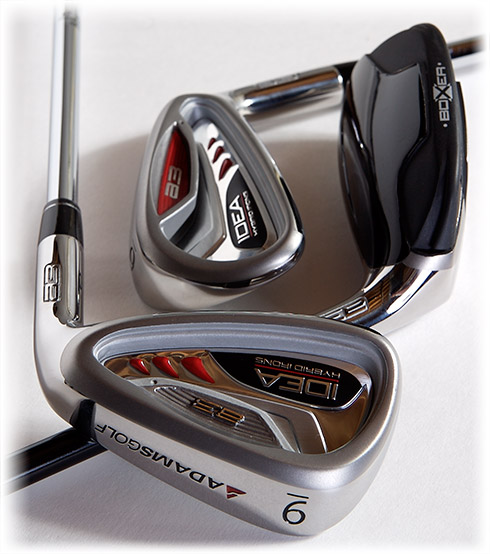 Happily for folks who like a lighter overall club and for those who prefer more vibration dampening, graphite shafts today are pretty much on par with their steel counterparts. You can find graphite shafts with playing characteristics very similar to steel. Whippiness, excessive torque, and poor accuracy are problems no more. Graphite can be more brittle than steel around the hosel, but even this seems to be a diminishing problem.
Happily for folks who like a lighter overall club and for those who prefer more vibration dampening, graphite shafts today are pretty much on par with their steel counterparts. You can find graphite shafts with playing characteristics very similar to steel. Whippiness, excessive torque, and poor accuracy are problems no more. Graphite can be more brittle than steel around the hosel, but even this seems to be a diminishing problem.
So why don’t you see them more on the PGA Tour? And why do so many players on the Champion’s Tour still play steel? Simple answer: because today’s pros grew up playing steel shafts, and steel shafts are heavier. For many of today’s pros, as well as for many of us recreational players, graphite just feels different and too light. It’s easy to rationalize that the extra distance in woods is worth the different feel, but in scoring clubs the weight and feel of the club is much more important.
Already, graphite is becoming more popular in recreational players’ clubs with most irons offered with a stock steel and a stock graphite option. We’ll probably start to see more graphite in irons on the pro circuits over the next 10-20 years as future pros grow up playing graphite and never get used to steel. There will always be those who prefer steel (at least until the next revolutionary material comes along), but we’ll see a lot more graphite out there, as well.
Graphite will help you hit the ball a little higher, and since it’s lighter it may increase your swing speed ever so slightly and give you more distance. It also dampens vibrations, which can be very important for those with arthritis.
Steel feels substantial, lowers ball flight, is less expensive, and, oddly enough, tends to have slightly higher resale value in irons. That too will probably change over time.
Whichever you choose, you can feel certain that you’re not giving away much that you would gain with the other. It’s more about feel now than anything, and feel can help you play better and enjoy the game more. So pick ther one that feels best to you.
Hole Number Three: What’s in Back?
Depending on what you’re looking for and what you want to spend, you may well find the best buys by walking past those big displays at the front of the store and heading back to the clearance and used sections. Arm yourself with a little knowledge of what past years’ models and pre-owned clubs should go for by checking out the PGA Value Guide, and you should be able to tell a bargain from a gouge.
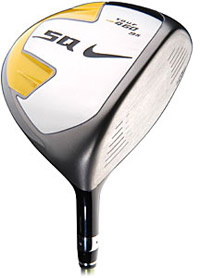 Unless you need the latest technology, chances are that you will do just as well with last year’s (or even the year before’s) clubs, and you should be able to find them for half (or better) the price they were when they hit the market. Technology in clubs is really not making huge leaps in performance the way it was just a few years ago. We’re talking baby steps in improvements for the most part. Why pay the premium for ’09 models when you can almost get the same performance from an ’07 model. Still, those ’09s are shiny and new!
Unless you need the latest technology, chances are that you will do just as well with last year’s (or even the year before’s) clubs, and you should be able to find them for half (or better) the price they were when they hit the market. Technology in clubs is really not making huge leaps in performance the way it was just a few years ago. We’re talking baby steps in improvements for the most part. Why pay the premium for ’09 models when you can almost get the same performance from an ’07 model. Still, those ’09s are shiny and new!
I also always cruise by the used rack when I’m in the golf shop. You never know what you’re going to find. I’ve been able to purchase used clubs at less than their trade-in value a few times. That’s instant return on an investment. Or you can often find almost-new clubs that lost favor in someone’s bag, but might fit right into your game. You can save yourself some money buying used.
Unfortunately, the really good buys are becoming harder to find at some of the big shops near me, but they do turn up from time to time. This year, the economy could spur better-than-usual deals in stores hungry for cash.
Hole Number Two: Are You Fit?
Getting fit for your clubs is a great way to increase your odds of getting clubs that work best for you and your swing. Choose where you get fit carefully, however. Not all fittings are equal.
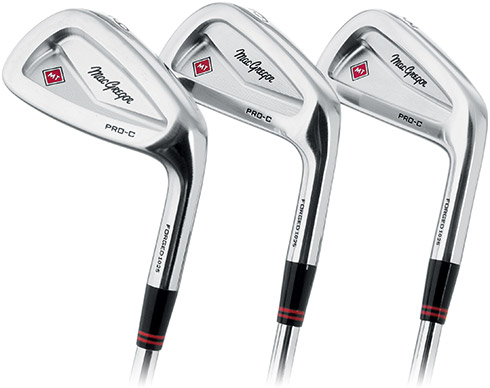 The most basic fitting involves hitting irons on a lie board. This will tell if you are leveling the club at impact. If you swing with the toe down, you will tend to hit the ball right. Toe up at impact will pull the ball left. It’s pretty simple and you could do it yourself with some inexpensive impact labels and a hard board. However, the cause of the toe up/down impact could be the player’s height or a swing tendency, so having a fitter who knows what they’re doing will help greatly. Some old school fitters need little more than a lie board and their eyes to get a pretty good fit for a client.
The most basic fitting involves hitting irons on a lie board. This will tell if you are leveling the club at impact. If you swing with the toe down, you will tend to hit the ball right. Toe up at impact will pull the ball left. It’s pretty simple and you could do it yourself with some inexpensive impact labels and a hard board. However, the cause of the toe up/down impact could be the player’s height or a swing tendency, so having a fitter who knows what they’re doing will help greatly. Some old school fitters need little more than a lie board and their eyes to get a pretty good fit for a client.
At the high end of the fitting spectrum are services like the Titleist and Cobra Factory Fitting where for a fee you can get pretty much the same kind of fitting experience that PGA Tour pros get. Fitting specialists will use all sorts of fitting tools, including various launch monitors and every combination of shafts and clubheads imaginable, to find the specific setup that will perform optimally for you.
If you don’t want to add $500 to the cost of your new clubs (the half-day visit to the Titleist Center runs $750, but $250 is refunded if you purchase clubs within a month), there are a lot of fittings available for less or even for free. The most worthwhile are generally those that offer the most combinations for you to try. Trying one driver against another in a simulator will help you learn something about the drivers, but it won’t help you find the best combination of head and shaft for you.
Several brands now offer specialized fitting carts in proshops and stores that will help you evaluate shafts as well as clubheads. These systems provide clubheads and shafts with quick change mechanisms so you can mix and match and narrow down the combinations that work best for you.
Hole Number One: What Will It Do For My Game?
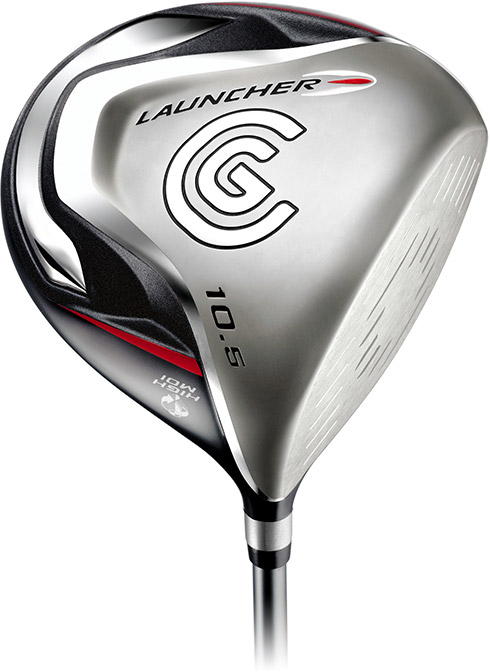 This is the tough question. It’s not as simple as “Do I need it?” or “Do I want it?” Basically, it all comes down to whether or not you believe that the club in question will improve your game or your enjoyment of the game to the extent that it is worth the expense.
This is the tough question. It’s not as simple as “Do I need it?” or “Do I want it?” Basically, it all comes down to whether or not you believe that the club in question will improve your game or your enjoyment of the game to the extent that it is worth the expense.
And that’s where a really good rationalization can come in handy. “If I buy this new driver I’ll hit the ball a couple yards farther and hit the fairway one more time per round. That will make me 30% happier in my day to day life, which will in turn make me 25% more productive at work, and a better lover… which will make my wife 50% happier and so she’ll let me golf 0.5 times more a week. That means more extra yards and more fairways hit each week, and therefore yet more happiness and so on and so on… Heck, I’d be stupid not to buy that driver!”

One thing to keep in mind is grooves. Although it is 10+ year away….
I’m glad you raised that because it is a topic of concern for a lot of people that really don’t need to worry about it.
Basically, it comes down to your aspirations. If you plan to try to qualify for a US Open (men’s, women’s, or senior) or for a professional tour in the next few years, you’ll need conforming grooves on all clubs with 24 degrees of loft or more starting in 2010. If you plan on playing one of the other USGA championships, you’ll need conforming grooves beginning in 2014. Otherwise, you can keep on playing the big wide, zippy grooves until at least 2024, as it stands right now.
So you should be fine playing your local club championships and other amateur events with square grooves for quite some time.
I agree with all you said. Only thing i would add is stretching out the years in past to consider for saving money.
It used to be that you could tell someone to save by buying last years model…but because technology made little surges each yr, you or I would advise them not much more than that.
But since all OEM companies have had for example in drivers the 460cc limit for years now, along with length limis, MOI etc. Really it has been at somewhat of a standstill for years now. You could safely buy a 4-5 yr old product that should provide a very similar performance with less price.
Heck after all the increases in size even Titleist has not alot new…so they are going backwards in size….from 460 to 450..so save some money and buy the discounted somewhat older mode from two season ago brand new and cheap.
Which is a good reason not to keep it in mind. 😀
Very seldom is mentioned what I consider the most important factor in choosing drivers. And that is how consistently your hitting pattern is closest to the sweet spot of the driver. The downswing happens in a fraction of a second in which your brain has to interpret where the the club head should hit the center of ball. It is a combination of head weight, shaft weight, internal weighting of head, flex characteristics of shaft etc all working together for your brain to compute in a few milliseconds.
And the sweet spot on the face of club is smaller than a dime even with 460cc head.
I would never invest hundreds of dollars on a driver or 3 wood without putting an impact tape on face and hit several balls and observe the hit pattern. What good is raw distance on your best hit if your hit pattern is inconsistent. Inconsistent hit patterns will degrade distance and direction, guaranteed! I am amazed at how different drivers give me different hit patterns. Your swing might be great in squaring the club head at impact but if it is not nearest to sweet spot, you will lose distance and direction.
Based on my swing speed I was recommended the M-speed Cobra driver. However my hit pattern with the F-speed (for faster swing speeds) was so much better. So I bought the F-speed and am rarely hitting off the fairway. So I will sacrifice the occasional longer drive over more consistent drives.